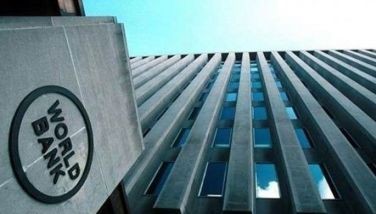Government grants additional perks to naphtha project proponents

December 27, 2002 | 12:00am
The government has decided to give additional incentives package to the proponents of naphtha cracker project in an effort to encourage them to push through with the project.
This includes giving incentives to the proposed naphtha cracker project by declaring the chosen site as an economic zone and extending the tariff protection for midstream petrochemical manufacturers.
Trade and Industry Secretary Manuel Roxas II said yesterday "the government has decided to prolong the tariff protection by at least two more years to give the proponents enough time to put the deal together and assure the projects’ viability by ensuring that it will have a stable local market for its output."
The Cabinet-level committee on Tariff and Related Matters (TRM), which is headed by Roxas, has decided to impose a uniform 10- percent Common Effective Preferential Tariff (CEPT) rate for six tariff lines classified as midstream petrochemical products.
These are polyethelene, polypropylene, polystryrene and polyvinyl chloride.
These commodities currently have 15-percent rates under the CEPT scheme.
In addition the TRM decided that the present tariffs ranging from three percent to 10 percent for the downstream plastic products will be maintained.
"The decision will allow the burden to be shared by all industry players and provide some relief to the downstream and end-users as the distortion would further be reduced," Roxas said.
Meanwhile, leaders of the petrochemical industry expressed dismay over the recommendations of the TRM to reduce rather than maintain the tariff rate for resins.
Jong Sereno, executive director of the Association of Petrochemical Manufacturers of the Philippines (APMP) said: "We are greatly saddened by the decision of the TRM. We presented a solid case backed up by duly audited financial statements and even recommendations contained in the Board of Investments Master Plan for the Petrochemical Industry."
"Even the findings of the detailed feasibility study undertaken by the Standford Research Institute was presented by the PNOC Petrochemical Development Corp. to the BOI," he added.
However, Sereno said, "instead of deciding on the basis of facts, the TRM decided on the basis of fears and because these fears are baseless, they end up with a recommendation that is not a solution for either the petrochem sector or the plastics sector."
This includes giving incentives to the proposed naphtha cracker project by declaring the chosen site as an economic zone and extending the tariff protection for midstream petrochemical manufacturers.
Trade and Industry Secretary Manuel Roxas II said yesterday "the government has decided to prolong the tariff protection by at least two more years to give the proponents enough time to put the deal together and assure the projects’ viability by ensuring that it will have a stable local market for its output."
The Cabinet-level committee on Tariff and Related Matters (TRM), which is headed by Roxas, has decided to impose a uniform 10- percent Common Effective Preferential Tariff (CEPT) rate for six tariff lines classified as midstream petrochemical products.
These are polyethelene, polypropylene, polystryrene and polyvinyl chloride.
These commodities currently have 15-percent rates under the CEPT scheme.
In addition the TRM decided that the present tariffs ranging from three percent to 10 percent for the downstream plastic products will be maintained.
"The decision will allow the burden to be shared by all industry players and provide some relief to the downstream and end-users as the distortion would further be reduced," Roxas said.
Meanwhile, leaders of the petrochemical industry expressed dismay over the recommendations of the TRM to reduce rather than maintain the tariff rate for resins.
Jong Sereno, executive director of the Association of Petrochemical Manufacturers of the Philippines (APMP) said: "We are greatly saddened by the decision of the TRM. We presented a solid case backed up by duly audited financial statements and even recommendations contained in the Board of Investments Master Plan for the Petrochemical Industry."
"Even the findings of the detailed feasibility study undertaken by the Standford Research Institute was presented by the PNOC Petrochemical Development Corp. to the BOI," he added.
However, Sereno said, "instead of deciding on the basis of facts, the TRM decided on the basis of fears and because these fears are baseless, they end up with a recommendation that is not a solution for either the petrochem sector or the plastics sector."
BrandSpace Articles
<
>
- Latest
- Trending
Trending
Latest























